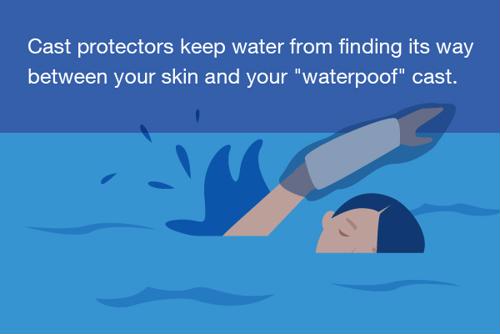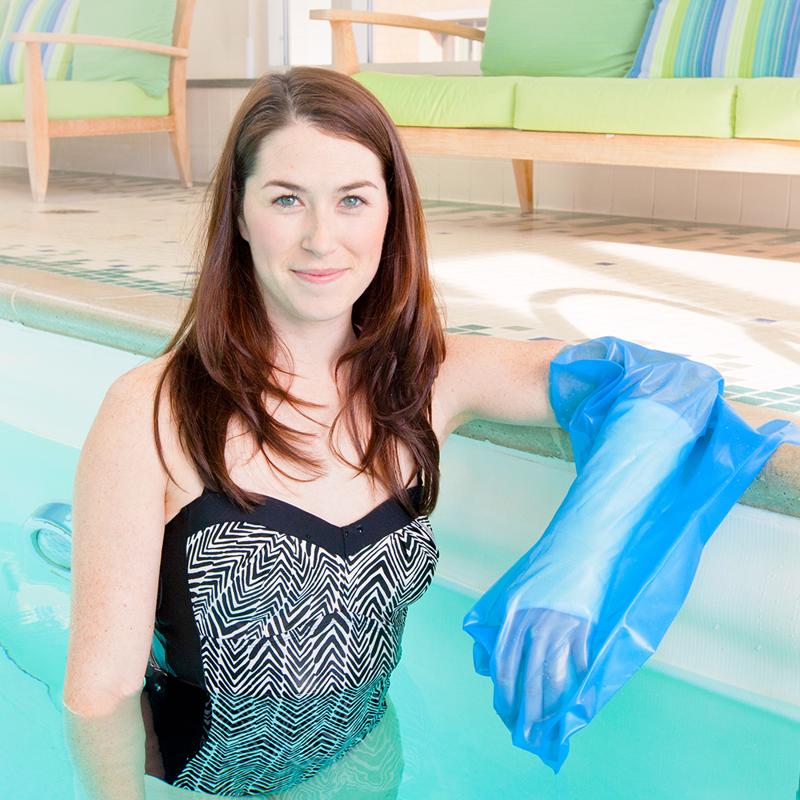
SEAL-TIGHT cast and bandage protectors are guaranteed to keep casts and bandages dry whether you're showering, bathing or swimming.
When you suffer from an injury that breaks a bone, your cast becomes your closest companion during the recovery period. For your cast to do its best work, it's critical to keep the space between your cast and skin dry. Along with your already impaired movement, this can make your daily showering routine slightly more difficult.
Made with plaster and lined with cotton, traditional casts can be ruined when they come into contact with water. But even waterproof casts and their synthetic materials aren't entirely immune to the issues caused by water getting inside the dressing. Here are the three drawbacks of wearing a waterproof cast, plus the trick to avoiding those disadvantages:
1. Hefty price tag
Due to their advanced technology and newer materials, waterproof casts tend to be more expensive than alternatives. Plus, not all insurance policies will cover the additional costs to upgrade to a waterproof cast.
2. Pesky upkeep
After a waterproof cast gets wet in the shower or pool, it should be flushed with mild soap and water, then thoroughly rinsed with a forceful flow of water, according to Washington University Orthopedics. While the lining is waterproof, it can still take a decent amount of time for it to dry completely when it does come into contact with water. Some compare the feeling to wearing a wet sock for a few hours. You can speed up the drying process with a hair dryer, but of course you'll need be to careful not to burn your skin.
3. Potential issues
The waterproof element of the cast doesn't necessarily guarantee protection from skin irritations. You'll still need to continually dry under the cast to protect the skin from hyper hydration, infections or rashes. Plus, the skin under the cast may still feel dry, even though you can fully submerge the cast in water. These issues can stall the healing process, or at the very least cause discomfort.

How can you overcome the drawbacks?
You certainly can't forgo the cast altogether, but you also don't have to settle for putting up with the drawbacks. Instead, invest in a cast protector. Even if you have a waterproof cast, the extra layer of protection is a valuable added assurance that water won't find its way in between your skin and cast, potentially causing further issues.
SEAL-TIGHT cast and bandage protectors are an easy, durable way to stay dry, guaranteed to keep casts and bandages dry whether you're showering, bathing or swimming. The covers easily stretch over casts, then seal securely for watertight protection. The original SEAL-TIGHT cast protector, designed for daily showering and bathing, is available in adult and pediatric sizes for hand and arm casts, as well as foot and leg. If you or the kids plan to spend time in the pool and hot tub, the sport cast covers will keep the dressings protected. SEAL-TIGHT is also available for more site-specific areas, such as mid-arm, elbow and knee. Plus, they're reusable and easy-to-use, making your recovery period a seamless process.
